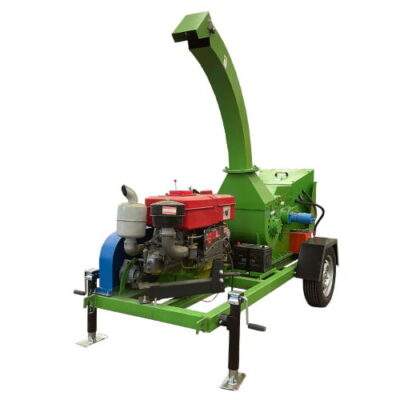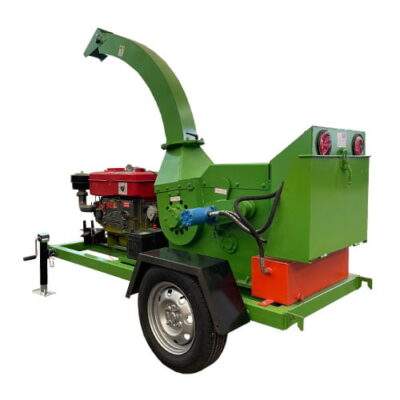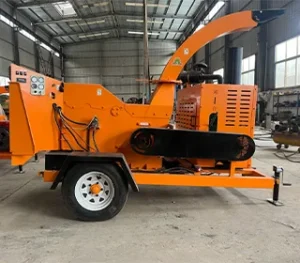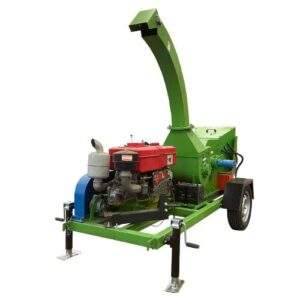The Benefits of Owning a Garden Wood Chipper for Eco-Friendly Landscaping
Welcome to My Blog!
Before we dive into the content, I’d love for you to join me on my social media platforms where I share more insights, engage with the community, and post updates. Here’s how you can connect with me:
Facebook:https://www.facebook.com/profile.php?id=61557298070472
Now, let’s get started on our journey together. I hope you find the content here insightful, engaging, and valuable.b
Introduction

In the world of eco-friendly landscaping, efficiency and sustainability go hand in hand. One tool that embodies these principles is the garden wood chipper. Designed to transform garden waste into useful mulch, a garden wood chipper offers several environmental and practical benefits. This comprehensive guide explores the advantages of owning a garden wood chipper, its key features, and how it can enhance your landscaping efforts while promoting sustainability.
What Is a Garden Wood Chipper?
A garden wood chipper is a machine used to break down branches, leaves, and other garden waste into smaller pieces, known as chips or mulch. These chips can then be used in various landscaping applications, such as mulching, composting, or as a base for garden paths.
How Does a Garden Wood Chipper Work?
Garden wood chippers use a combination of blades and rollers to shred garden debris. The process typically involves feeding branches or other materials into the chipper, where they are cut into small, manageable pieces. The resulting mulch can be collected and used in various landscaping tasks.
Key Components of a Garden Wood Chipper
- Feed Chute: The entry point where garden waste is fed into the chipper.
- Blades or Knives: Sharp components that shred and cut the material.
- Rollers: Assist in pulling the material through the chipper.
- Discharge Chute: Where the processed mulch exits the machine.
- Engine: Powers the chipper and determines its performance capabilities.
Benefits of Owning a Garden Wood Chipper
Owning a garden wood chipper can offer numerous advantages for both the environment and your landscaping efforts. Here are some key benefits:
Eco-Friendly Waste Management
Using a garden wood chipper helps manage garden waste in an environmentally friendly manner. Instead of sending branches, leaves, and other debris to a landfill, you can convert them into useful mulch. This reduces the volume of waste and minimizes the environmental impact.
Improved Soil Health
Garden mulch produced by a wood chipper can be used to enrich soil. Mulch helps retain soil moisture, suppress weeds, and gradually adds nutrients to the soil as it decomposes. This leads to healthier plants and a more sustainable garden.
Reduced Yard Waste Disposal Costs
By processing garden waste on-site, you can reduce the need for professional waste disposal services. This can lead to cost savings, especially if you generate a large amount of garden debris regularly.
Versatile Landscaping Applications
The mulch created by a garden wood chipper can be used for a variety of landscaping purposes. It can be applied to garden beds, used as a base for pathways, or even added to compost piles to improve their quality.
Enhanced Aesthetic Appeal
Using mulch from a wood chipper enhances the visual appeal of your garden. It provides a uniform, tidy appearance and can be used to define garden beds and pathways, contributing to a well-maintained and attractive landscape.
Increased Property Value
A well-maintained garden with efficient waste management practices can increase the overall value of your property. Potential buyers are often attracted to properties with sustainable landscaping practices and well-kept outdoor spaces.
Efficient Use of Resources
Owning a garden wood chipper allows you to make efficient use of the resources available to you. Instead of letting garden waste go to waste, you can repurpose it into mulch and compost, contributing to a more sustainable and self-sufficient garden.
Key Features to Look for in a Garden Wood Chipper
When selecting a garden wood chipper, it’s important to consider several features to ensure that it meets your needs and preferences. Here are some key features to look for:
Chipping Capacity
The chipping capacity of a garden wood chipper determines the size of the branches and debris it can handle. Look for a chipper with a suitable capacity for your garden’s needs. Larger chippers can handle bigger branches but may be bulkier.
Engine Power
The power of the engine affects the chipper’s performance and efficiency. More powerful engines can handle tougher materials and work more quickly. Choose an engine power level that matches the types of tasks you plan to perform.
Build Quality and Durability
A well-built chipper made from high-quality materials will last longer and perform better. Look for features such as sturdy construction, durable blades, and reliable components.
Ease of Use
Consider the ease of operation and maintenance. Features such as user-friendly controls, easy-to-clean components, and straightforward assembly can enhance your experience with the chipper.
Safety Features
Safety is paramount when using garden equipment. Look for chippers with safety features such as automatic shut-off mechanisms, protective shields, and secure feeding chutes.
Portability and Storage
Consider the size and weight of the chipper if you need to move it around or store it. Some models come with wheels or handles for easier mobility.
Noise Level
Garden wood chippers can be noisy. If noise is a concern, look for models designed to operate more quietly or consider using ear protection.
Essential Features of Garden Wood Chippers
| Feature | Description |
|---|---|
| Chipping Capacity | The maximum size of branches and debris the chipper can handle. |
| Engine Power | The power output of the engine, affecting performance and efficiency. |
| Build Quality | The materials and construction quality of the chipper, impacting durability. |
| Ease of Use | Features that enhance user convenience, such as controls and maintenance access. |
| Safety Features | Mechanisms and designs to ensure safe operation, including protective shields and shut-off systems. |
| Portability and Storage | The size and weight of the chipper, and features like wheels for mobility. |
| Noise Level | The level of noise produced by the chipper during operation. |
How to Use a Garden Wood Chipper Safely

Using a garden wood chipper requires careful attention to safety to prevent accidents and injuries. Here are some essential safety tips:
Read the Manual
Always read the manufacturer’s manual before operating the chipper. It provides important safety instructions, operational guidelines, and maintenance tips.
Wear Protective Gear
Use appropriate personal protective equipment (PPE), including safety goggles, gloves, ear protection, and sturdy clothing. This will help protect you from flying debris and noise.
Inspect the Chipper
Before each use, inspect the chipper for any signs of damage or wear. Ensure that all parts are in good condition and that safety features are functioning properly.
Proper Feeding Techniques
Feed branches and debris into the chipper slowly and steadily. Avoid overloading the chipper, and never place your hands or body parts near the feed chute.
Keep Children and Pets Away
Ensure that children and pets are kept away from the operating area. The chipper should be used in a secure location to prevent accidents.
Maintenance and Cleaning
Regularly clean and maintain the chipper according to the manufacturer’s recommendations. This includes sharpening blades, checking for blockages, and keeping the machine clean.
Shutdown Procedures
Follow proper shutdown procedures when finished using the chipper. Ensure that the machine is turned off and disconnected from the power source before performing any maintenance or cleaning.
Conclusion
Owning a garden wood chipper offers numerous benefits for eco-friendly landscaping, from efficient waste management to improved soil health and cost savings. By understanding the key features of these machines and following proper safety procedures, you can make the most of your garden wood chipper and contribute to a more sustainable and attractive outdoor space. Investing in a garden wood chipper not only enhances your landscaping efforts but also supports environmentally responsible practices.
FAQ
What types of materials can be processed with a garden wood chipper?
Garden wood chippers are designed to process branches, leaves, twigs, and other garden debris. They can handle various types of organic material, but it’s important to follow the manufacturer’s guidelines for size and type of materials.
How often should I sharpen the blades of my garden wood chipper?
The frequency of blade sharpening depends on how often you use the chipper and the types of materials you process. Generally, blades should be sharpened regularly or as needed to maintain optimal performance. Refer to the manufacturer’s recommendations for specific guidelines.
Can a garden wood chipper be used in commercial landscaping?
Yes, garden wood chippers can be used in commercial landscaping, provided they are suitable for the volume and type of work involved. For larger operations, consider a commercial-grade chipper with higher capacity and durability.
How do I choose the right size of garden wood chipper for my needs?
Consider the size of the branches and debris you need to process, as well as the frequency of use. A chipper with a larger chipping capacity and more powerful engine is suitable for handling larger and tougher materials.
Are there environmentally friendly options for garden wood chippers?
Many modern garden wood chippers are designed with eco-friendly features, such as energy-efficient engines and reduced emissions. Additionally, using the mulch produced by the chipper supports sustainable landscaping practices.



